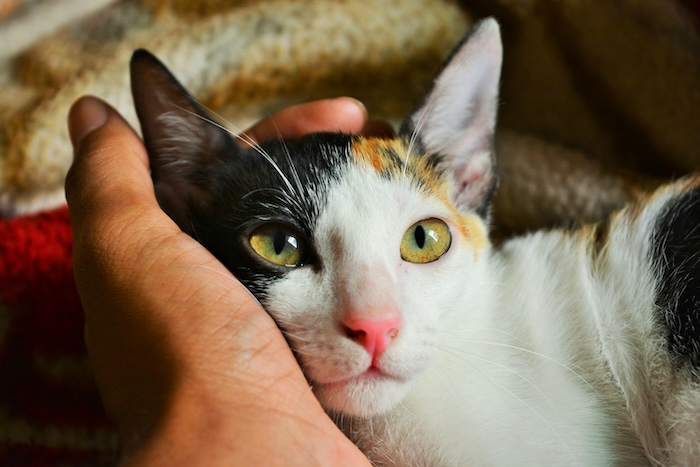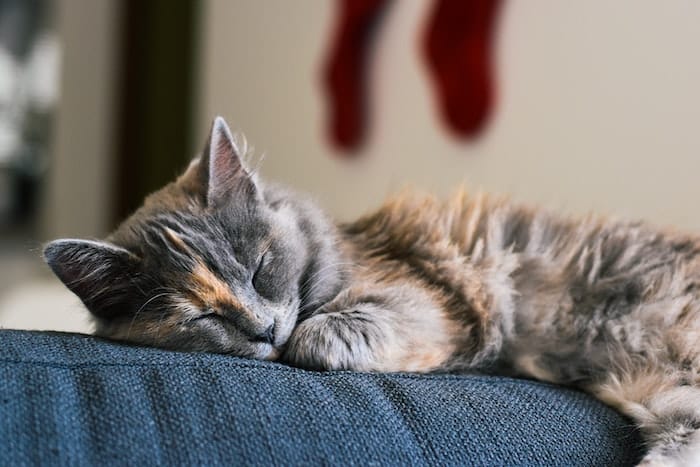Have you ever noticed a stray cat wandering around your neighborhood or sleeping beneath your car? If you’re a cat lover, you could be tempted to adopt and bring the animal home. However, before you act, remember that the cat may already be in the care of someone actively searching for it. In addition, the cat may be feral and averse to socializing with people.
You may be wondering what to do in this situation, how to help the cat, and how to return it to its owner. But your first goal should always be finding the owner of a missing pet.

Steps to Take in the Event of a Lost Cat Discovery
It could be challenging to find a missing cat and reunite. You may still want to help the cat even if you have yet to learn where to take it, how to approach it, or where to look for its owner. If you find a lost cat, take these actions.
Identify the Whether the Cat Is Feral or Stray
You can get confused if you find a missing cat and wonder if it’s feral or stray. You need to determine if the missing cat is a stray or a wild cat before deciding what to do if you find it.
Feral cats are usually terrified of people and will act aggressively against them because they have never been socialized and instead live in the wild. Stray cats are usually more excellent and approachable because they were once owned by someone but were lost or abandoned.
You can distinguish a feral cat from a stray cat by observing its behavior and appearance. A feral cat will usually hiss, growl, run away, or avoid making eye contact when you approach it. A stray cat may gaze at you, meow at you, or even brush up against you. Unlike wild cats, which may also have an injured, matted, or muddy coat, stray cats may have a cleaner, smoother, or healthier coat.
If the cat is feral, you should leave it alone and refrain from attempting to trap it because it may grow angry and fearful of you. The following action will help the stray cat if that’s the case.
Make Sure the Cat’s Safety
Exercise caution and respect if you choose to get close to the cat. Never attempt to corner, grasp, or chase the feline. The cat can get hurt or scared by it. Instead, entice the cat with food or water and talk in a kind, calming tone.
If the cat seems friendly and allows you to pet it, you can pick it up and place it in a box or carrier. A practical, humane trap can capture a cat that appears fearful or hostile. You can buy a trap or borrow one from a nearby animal sanctuary.
Once the cat is safely inside, you should check on its health. If the cat shows any sickness symptoms, such as cuts, infections, or parasites, take it to the veterinarian immediately.
If the cat seems healthy, you can keep it in a quiet, cozy place away from children and other animals. In addition to food and water, the cat requires toys, a litter box, a place to hide, and a place to play. Furthermore, monitor the cat’s mannerisms and conduct to see if it gradually becomes more reliable and easygoing.

Try to Find Out Its Identity
The next step is attempting to find out if the cat has an owner. Look for collars, microchips, or identification tags on the cat to accomplish this. Tags or collars may bear the owner’s name, address, and phone number.
A microchip is a little implanted device that sits under the cat’s skin and contains a unique code that a shelter or veterinarian can scan. If the cat is microchipped, you can contact the microchip provider or the animal shelter. They will help you find the owner of the missing pet.
Search for Missing Pets in Your Area
Another way to help a lost cat is to look for missing pets in your area and see if they match the cat you found. Check the fliers, posters, and town announcements for lost cats. Additionally, you can contact animal shelters and rescue groups to see if any reports of missing cats match the description of the cat you have located.
To find out whether there have been any reports of missing pets in your region, you may also search lost and found pet websites like PawMaw. They have user-updated databases to assist you in finding reported missing pets based on location.
Furthermore, if you utilize PawMaw’s system to report a lost cat, it will immediately construct a missing cat flyer based on the information and photos you submit. You may also share it locally and print it off.
Publish a Notice Saying “Found Cat”
If you cannot find any missing cat reports on the cat you have found, you should put up a sign saying “found cat” and hope that someone will come pick it up. Include a notice with the cat’s photo, a description, and your contact information.
Post your message to pet-related websites, online pet forums, and social media afterward. Moreover, update the note often and remove it if the cat is claimed or adopted.
You should also exercise caution if you give the cat to someone who doesn’t seem reliable or cannot produce identification. Ensure all the details are correct before transferring the cat by requesting ownership proof, such as photos, medical records, or adoption paperwork.

If Needed, Find the Cat a New Home
None of those techniques may lead you to the lost cat’s owner. If so, you will need to find the cat a new home. You can adopt the cat in two ways: ask a friend, relative, or someone you know whether they would be interested in adopting the animal.
You can also phone local shelters, foster families, and rescue groups to check if they can take the cat in or help you find a new home. Give the animal shelter the task of finding the cat a new home, and avoid using social media.
Final Words
After reading this blog, you know what to do if you find a missing cat. When the lost cat is under your care, you are solely responsible for its general health and well-being. Follow the directions to ensure the cat is safe and secure in its designated area.
Ascertain whether the cat is feral or stray, ensure its safety, try to identify it, search the area for lost pets, publish a notice announcing the cat’s location, and, if required, find a new home. By doing this, you can help the cat find a loving new home or get back together with its owner. You have the power to alter the lives of the cats and yourself.
Author Bio:
Meet Natalia Michelle, a devoted pet owner and competent writer of PawMaw. Natalia Michelle brings the world of animal companions to life via intriguing words, with a heart full of love for pets and a nomadic spirit. Natalia Michelle, a prolific writer, not only shines in her job but also flourishes in pet care and companionship. Discover her unique take on the world of pets.
